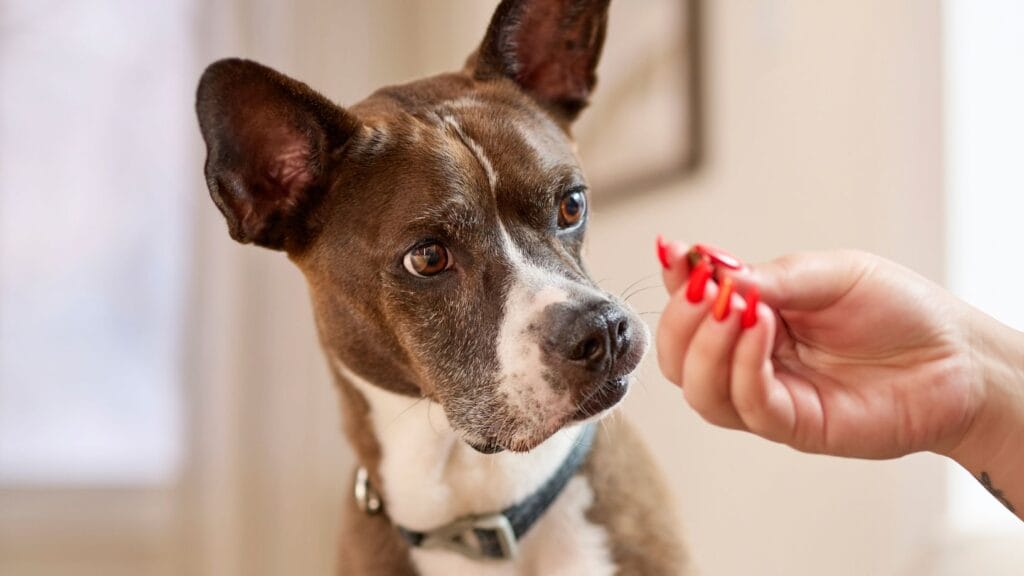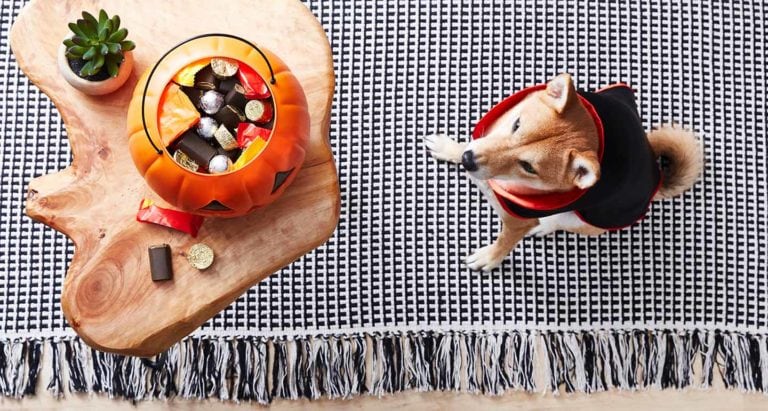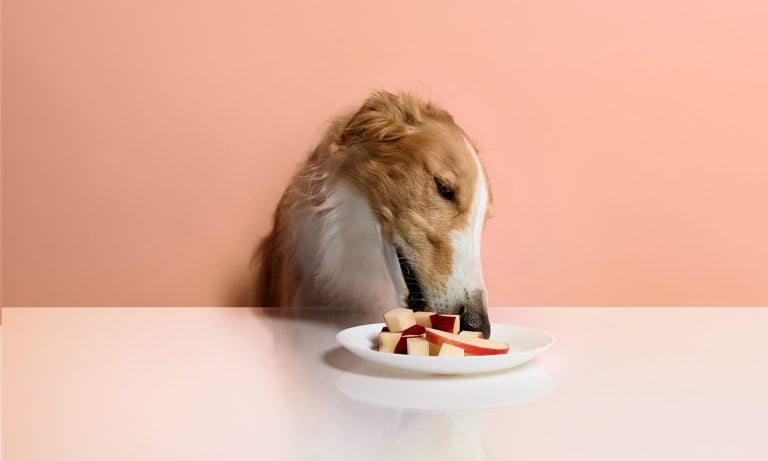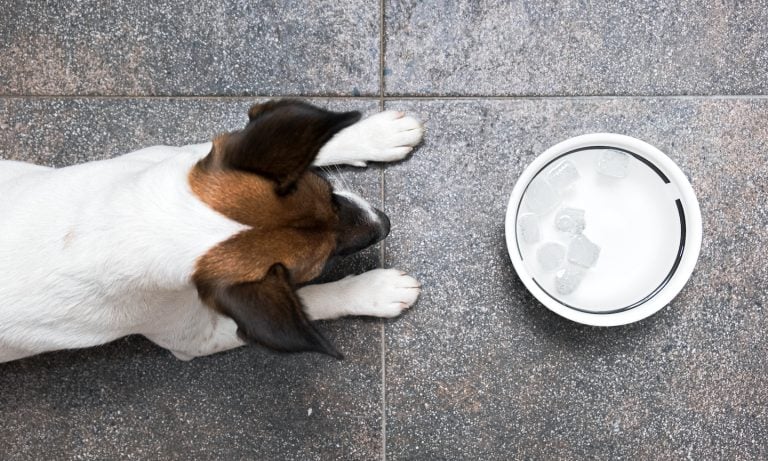From individually wrapped chocolates and chocolate bars to ice cream and lava cakes, there are countless options to satisfy our sweet tooth. But can dogs eat chocolate too?
We spoke with two vet experts to learn more about what makes chocolate dangerous to dogs and what to do if your dog eats some.
In This Guide:
Can Dogs Eat Chocolate?
No, dogs can’t eat any kind of chocolate—whether it’s dark chocolate, milk chocolate, white chocolate, ruby chocolate, or any other variation.
As tasty as this treat is to people, chocolate is toxic to dogs and can cause mild to life-threatening symptoms if ingested.
Why Is Chocolate Bad for Dogs?
This cacao-crafted confection is known as one of the most toxic substances to our furry friends. But why can’t dogs eat chocolate, exactly?
Chocolate poses a threat to dogs for two main reasons: caffeine and theobromine, says Katie Osekavage, DVM, DACVECC, at the Veterinary Emergency Group (VEG) in Greenville, South Carolina. Dogs’ bodies are unable to metabolize caffeine and theobromine as quickly as ours, which can result in clinical signs.
Dr. Osekavage explains how these naturally occurring compounds, also known as methylxanthines, can affect a dog’s health:
- Caffeine content: Chocolate contains caffeine, which can lead to increased heart rate and serious health issues in dogs. Like coffee, caffeine in chocolate can cause rapid heartbeat, posing risks to your pet's well-being.
- Theobromine toxicity: Another harmful component found in chocolate is theobromine. Theobromine acts as a diuretic, similar to caffeine, and may cause dehydration in dogs and subsequent health complications.
“Methylxanthines are rapidly absorbed from the gastrointestinal tract (GI tract), and signs can be seen as soon as one to two hours after ingestion,” Dr. Osekavage says.
How Much Chocolate Can a Dog Eat Before Getting Sick?
The amount of chocolate a dog can eat before getting sick depends on the type of chocolate, says Renee Schmid, DVM, DABT, DABVT, senior veterinary toxicologist and DVM supervisor at Pet Poison Helpline® in Bloomington, Minnesota.
The darker and purer the chocolate, the higher the levels of theobromine and caffeine—thus, a smaller amount would be needed for a dog to get sick, she explains.
Examples of dark, pure chocolate include:
- Pure cacao
- Cocoa powder
- Baker’s chocolate
- Semi-sweet chocolate
Milk chocolate and white chocolate, on the other hand, have less theobromine and caffeine, so more would be needed for a dog to get sick, Dr. Schmid adds.
If a dog eats chocolate of any kind, they may show the following common symptoms:
- Vomiting
- Diarrhea
- Increased thirst
Other signs include:
- Agitation or restlessness
- High heart rate (tachycardia)
- Elevated blood pressure (hypertension)
“Remember, chocolate’s bitterness correlates with its toxicity level,” Dr. Osekavage says. “While dark baking chocolate is highly toxic, even milder forms, like white chocolate, can pose risks. It’s crucial to avoid feeding any type of chocolate to dogs, as all varieties can harm their health.”
How Much Chocolate Is Considered Toxic for Dogs?
How much chocolate is considered toxic for dogs also depends on their size.
According to the Merck Veterinary Manual, 1 ounce of milk chocolate per pound of a dog’s body weight can be a potentially lethal dose. And though a little bit of chocolate may not present severe health risks to a big dog, like a Doberman Pinscher for instance, it can be extremely dangerous to a small dog, like a Pomeranian.
Even so, chocolate is toxic to all dogs, and symptoms can vary from one dog to another.
No matter your pooch’s size, the best course of action is to stash any chocolate out of paw’s reach to keep them safe.
Signs of Chocolate Poisoning in Dogs
Chocolate toxicity occurs when a dog has consumed an excessive amount of methylxanthines. This can result from eating large quantities of chocolate, or eating chocolate with a high concentration of theobromine and caffeine.
Dr. Osekavage says signs of chocolate poisoning in dogs include:
- Vomiting and diarrhea
- Excessive thirst and urination
- Restlessness
- Elevated and/or abnormal heart rate
- Seizures
“Seizures indicate extreme chocolate toxicity and can be fatal without veterinary intervention,” she says. “While they typically occur after ingesting large quantities of chocolate, their presence warrants immediate veterinary attention.”
A chocolate toxicity calculator can estimate a dog’s potential risk of poisoning. If your dog has ingested chocolate, this tool can provide insight on the severity of their symptoms and guidance on what to do next. To use a chocolate toxicity calculator, enter your dog’s weight, the type of chocolate that was ingested, and the amount consumed.
What If a Dog Eats Chocolate? Steps To Take
If you’ve discovered that your dog has eaten chocolate, call your vet, or the Pet Poison Helpline at 855-764-7661, right away. This can determine whether the amount ingested is enough to be a problem or if they can be monitored at home.
“Ideally, having the [chocolate] packaging is very helpful to know what the product was and how much could have been eaten,” Dr. Schmid says. “If the packaging is missing, remembering the brand, type of chocolate, and package size can be very helpful as well.”
Treating Chocolate Toxicity in Dogs
Treatment for chocolate toxicity in dogs depends on the symptoms, type of chocolate, and amount of chocolate ingested, Dr. Osekavage says.
Though there isn’t an antidote for chocolate poisoning, vets can treat the symptoms.
According to Dr. Osekavage, treatment for chocolate toxicity may consist of the following:
- Inducing vomiting: If symptoms haven’t developed after a dog has ingested chocolate, vets may make a dog throw up to expel their stomach contents—aka the chocolate. Vets may also give activated charcoal to prevent further absorption through the GI tract.
- Administering intravenous (IV) fluids: IV fluids may be recommended to help a dog get the caffeine and theobromine out of their body by urinating. Because these compounds can be reabsorbed through the urinary bladder, frequent walking and urination can help limit this.
“If there are signs of agitation, sedatives may be used to help calm the dog down,” Dr. Osekavage adds. “Medication can also be given to control blood pressure, heart rate, or heart rhythm. In severe cases, anti-seizure medications may be needed as well.”
How To Prevent Your Dog from Eating Chocolate
Considering all types of chocolate are dangerous to dogs, it’s important to take precautions to reduce (and ideally, eliminate) the risk of them possibly ingesting it.
To keep your inquisitive canine safe from sniffing out and eating chocolate, Dr. Schmid shares these tips:
- Keep chocolate up high and out of reach. The best secured spots include behind a closed door, like a pantry or cabinet. You can also add cabinet locks to further pet-proof your home, or place chocolate in the fridge. “Sitting chocolate on the kitchen table or counters is often not high enough, and if there are cat acrobats in the house, they could knock the chocolate onto the floor for the dog to eat,” Dr. Schmid says.
- Keep any gifts wrapped that contain chocolate high out of reach. If someone gifted you chocolate, place it somewhere your dog can’t access, as our super smart pups can easily unwrap gifts.
- Remove chocolate from your luggage. Bring back some premium chocolate from your international trip? Remove it from your luggage, Dr. Schmid says, so your pup doesn’t try it before you do.
It’s also a good idea to not eat chocolate around dogs, especially because our personal four-legged vacuum cleaners might be quick to lick up whatever falls on the floor—or hastily take a bite, thinking our sweet treat is for them.
Teaching children that chocolate is a big no-no for our canine companions can be helpful as well.
FAQs About Dogs and Chocolate
Q:Can chocolate kill dogs?
A:Yes, chocolate can kill dogs if eaten in large amounts. This is due to changes to the dog’s central nervous system and cardiovascular system when consumed, Dr. Schmid explains.
“The good news is that when chocolate poisoning is caught early and treated, most dogs are able to make a full recovery,” she says.
Q:Can dogs eat white chocolate? Can dogs eat milk chocolate?
A:No, dogs can’t eat white chocolate or milk chocolate. Although these kinds of chocolate are less of a concern compared to darker, purer forms of chocolate, Dr. Schmid says they should still be avoided, since any form of chocolate ingestion can lead to pancreatitis.
White chocolate contains very little theobromine and caffeine but can cause poisoning if ingested in large amounts. Milk chocolate can be an issue depending on a dog’s size and the amount ingested, Dr. Schmid says.
Q:What should I do if my dog ate chocolate but is acting fine?
A:If you suspect your dog has eaten chocolate, contacting an emergency vet is imperative, Dr. Osekavage says.
Waiting for symptoms to manifest can complicate treatment, so it’s best to consult a vet as soon as possible to ensure timely intervention and the best possible outcome for your pet, she adds.
Q:What do I do if my dog ate a chocolate chip cookie?
A:If you notice your dog is exhibiting symptoms after eating a chocolate chip cookie, Dr. Osekavage recommends promptly taking them to the emergency vet. That way, you can swiftly address their symptoms and ensure their well-being and recovery.
Q:Should I make my dog throw up after eating chocolate?
A:No, do not make your dog throw up after eating chocolate. Inducing vomiting can be dangerous if done at home.
Call your vet’s office or animal poison control. Depending on the situation, a veterinary professional may recommend inducing vomiting at home if necessary and provide clear directions on how to safely do so.
MORE FOODS DOGS CAN’T EAT:
Share:













